Reviews
Take Home Work by Yoko Ono and Carsten Höller at the Jewish Museum, Where All the Art Is Free
The Jewish Museum defies art world convention.
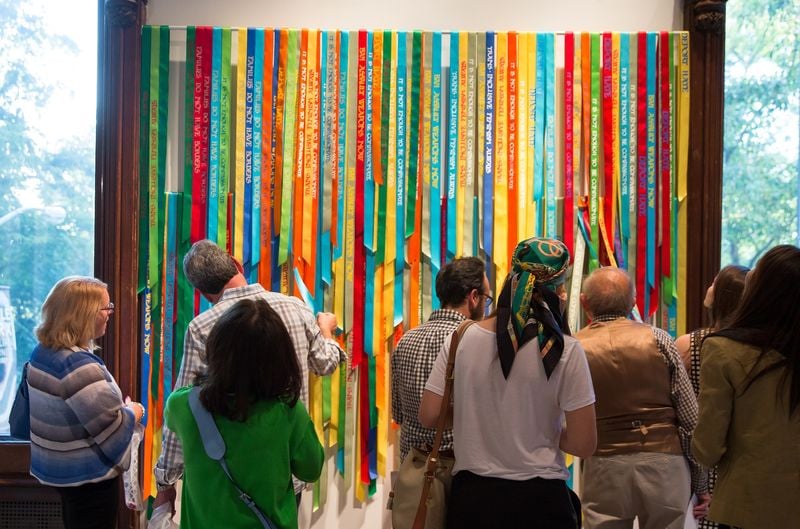
The Jewish Museum defies art world convention.

Sarah Cascone

They’re giving away the art—literally—at New York’s Jewish Museum this fall. That’s because the institution’s current exhibition, “Take Me (I’m Yours),” defies accepted art world conventions, encouraging visitors to take the artworks on view home with them.
It’s a re-staging of a show conceived by Hans Ulrich Obrist, artistic director of London’s Serpentine Galleries, and artist Christian Boltanski, that first appeared at the Serpentine in 1995. The two were inspired by the idea that “it would be great to do a show that would reflect upon how art could be exhibited and used differently,” said Obrist at a press preview of the exhibition.
Obrist was back on hand to bring this iteration to life, co-curating the show with the Jewish Museum’s Jens Hoffmann, director of special exhibitions and public programs, and Kelly Taxter, associate curator. For his part, Boltanski contributed a work of his own, titled Dispersion. He first exhibited the towering pile of used clothing at Paris’s Quai de la Gare in 1993.
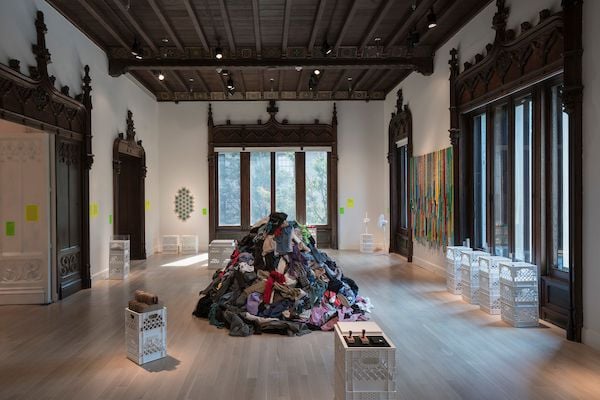
Exhibition view of “Take Me (I’m Yours)” at the Jewish Museum with Christian Boltanski’s Dispersion in the center. Courtesy of photographer David Heald/the Jewish Museum.
Hoffmann, who has known Obrist for some 20 years, was interested in revisiting “Take Me (I’m Yours)” for a number of reasons. As curator, he explained during the preview, he struggles with the fact that “I make a show, the show disappears, and nothing is left.”
“Take Me (I’m Yours)” is an “extremely radical exhibition that really quintessentially questions the very core what a museum is,” said Hoffmann. By giving away all the art, the show boldly defies both the red-hot art market and the understanding of museums as carefully guarded repositories for valuable work.
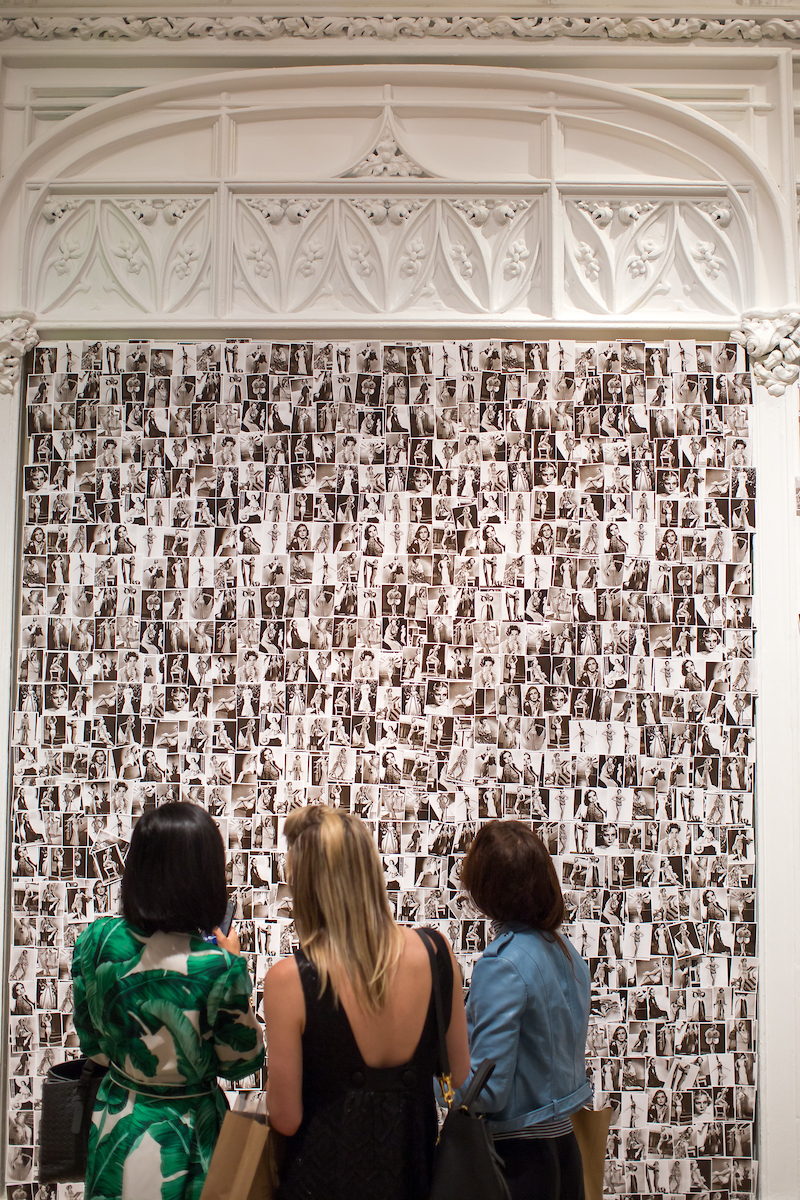
Hans-Peter Feldmann, The Prettiest Woman (2016) in “Take Me (I’m Yours)” at the Jewish Museum. Courtesy of the artist/photographer Will Ragozzino, SocialShutterbug.com.
The Jewish Museum is a natural fit for the exhibition’s first US edition due to “the ideas around the exhibition about community and sharing,” Taxter told artnet News. “That concept is so much a part of Jewish culture and daily life”
The scale of the exhibition, which includes 42 artists versus just 12 in the 1995 show, is undeniably ambitious. “There was a lot of sweat and tears, and maybe even a little blood,” said Hoffmann, ruefully noting that “I cut myself at some point.”
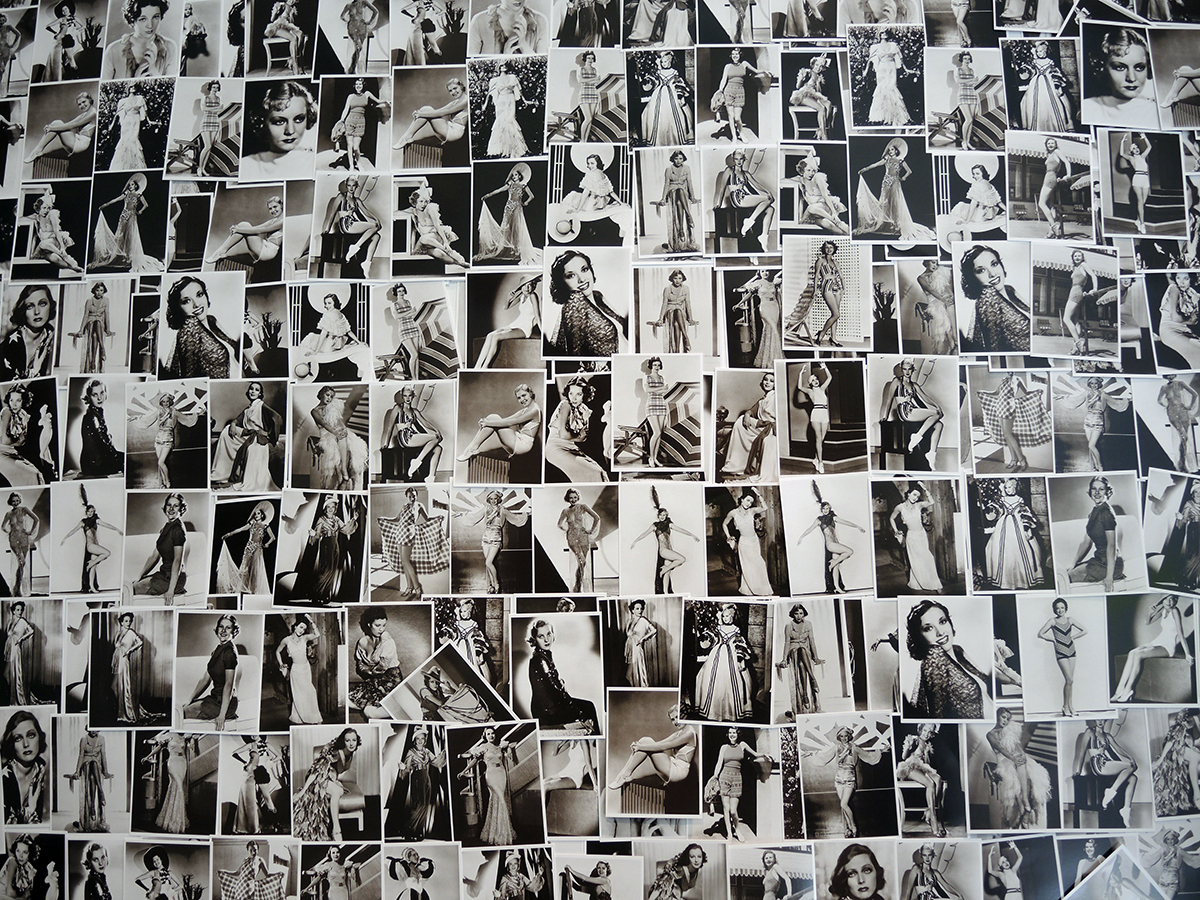
Hans-Peter Feldmann, The Prettiest Woman (2016) in “Take Me (I’m Yours)” at the Jewish Museum. Courtesy of Sarah Cascone.
In order to fabricate the thousands upon thousands of artworks needed to keep the show fully-stocked throughout its run, the museum even launched a Kickstarter campaign, raising over $30,000 through the crowdfunding site.
In some ways, the show seems to anticipate the viewer’s every need: Feeling chilly? Sort through Boltanski’s mound of thrift store goodies to find an oversize cardigan. Dehydrated? One of Adriana Martinez’s cans of seltzer, titled Zero Lemon on the Run, should do you nicely.
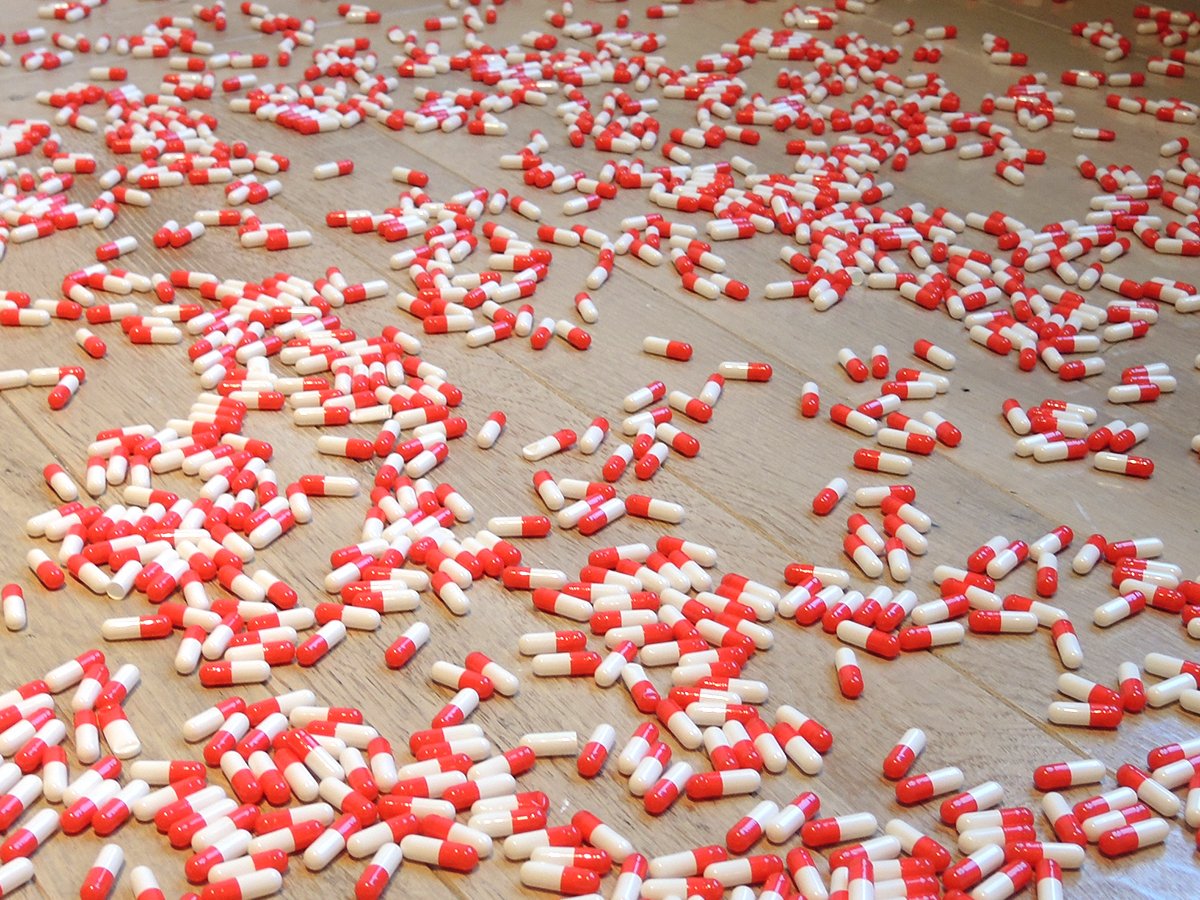
Carsten Höller, Pill Clock (Red and White) (2015) in “Take Me (I’m Yours)” at the Jewish Museum. Courtesy of Sarah Cascone.
Case of the munchies? Rachel Rose and Ian Cheng provide a box of fortune cookies full of notes like “You Will Die,” and there’s an unlimited supply of hard candy thanks to Felix Gonzalez-Torres’s well-trod “Untitled” (USA Today)—the show in its entirety is in large part a homage to the influential 1990 work.
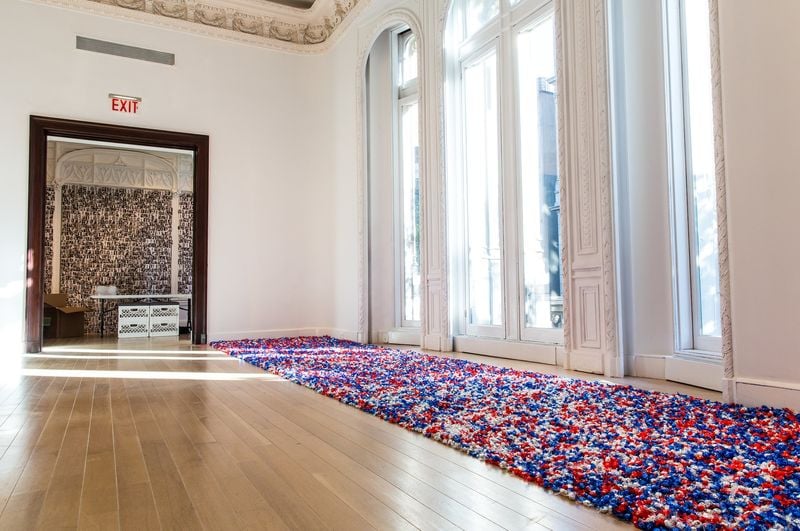
Felix Gonzales Torres, “Untitled” (USA Today), 1990, in “Take Me (I’m Yours)” at the Jewish Museum. Courtesy of photographer Will Ragozzino, SocialShutterbug.com/Andrea Rosen Gallery, New York. © The Felix Gonzalez-Torres Foundation.
If you’re feeling sick, a placebo capsule from Carsten Höller‘s Pill Clock (Red and White) will probably go a ways toward relieving your headache. And Haim Steinbach is as good as any dashing gentleman with his handkerchief and handy box of tissues, at the ready to deal with your runny nose (Untitled [Tissues], a 2016 piece mounted on a metal and rubber stand in the middle of the gallery).
While the show includes a number of artists known for creating conceptual work of this nature, such as Yoko Ono and Alison Knowles, and returning artists from the 1995 show, like Hans Peter Feldmann, “We didn’t want to it be a list of people you would expect,” said Taxter. The museum worked with other artists to “get them to think about their work in a different way,” like Alex Israel, who has contributed a smart, colorful Self-Portrait (Lapel Pin).
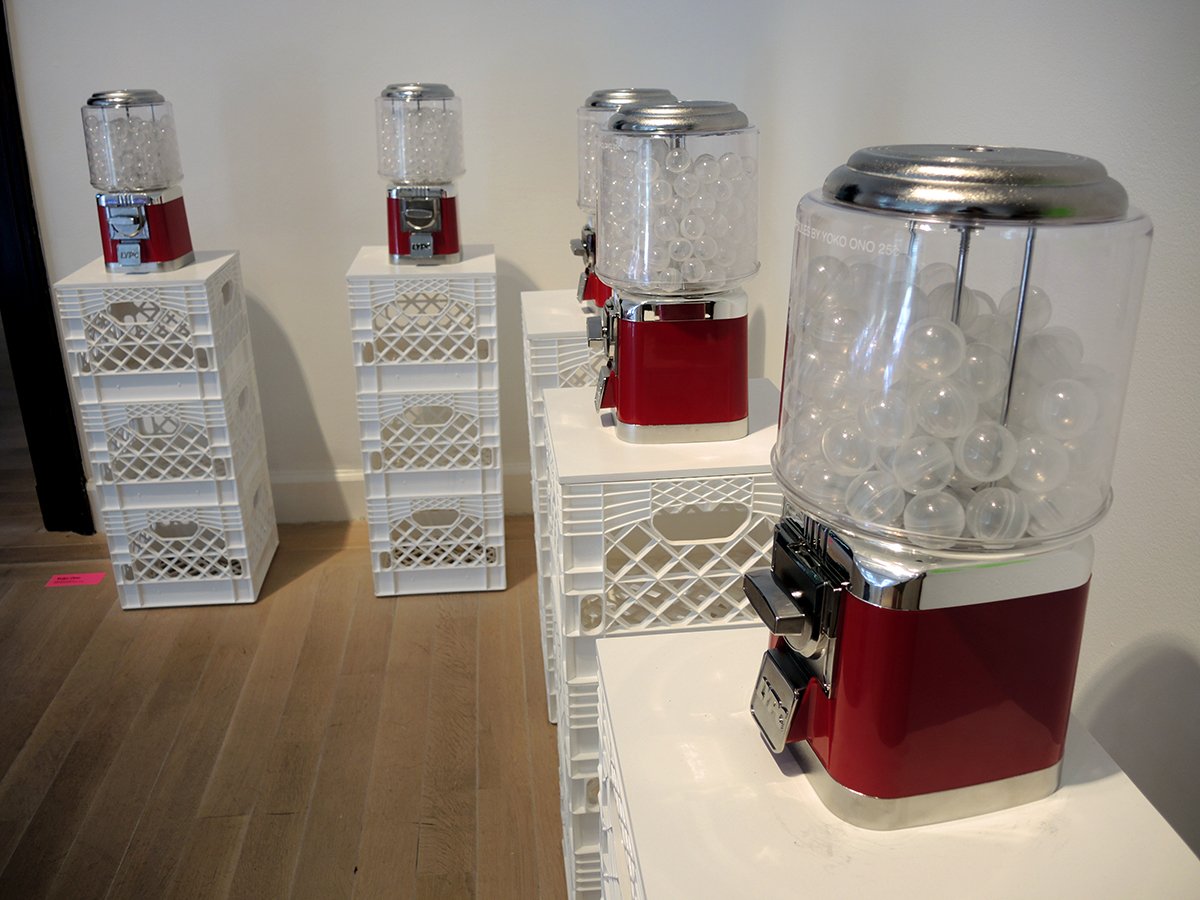
Yoko Ono, Air Dispensers (1971–2016) in “Take Me (I’m Yours)” at the Jewish Museum. Courtesy of Sarah Cascone.
One of the show’s main goals is to democratize art, and in that regard it would seem to be quite a success—has there ever been a less pretentious artwork than No One Is Disposable by General Sisters (Dana Bishop-Root and Ginger Brooks Takahashi)? Made from recycled paper, the piece is installed in the museum’s bathroom stalls, where museum visitors are able to make full use of the work.
“People are very respectful when they come to museums… but when prompted, they’re very happy to break through that invisible barrier,” said Taxter. She cited Rirkrit Tiravanija’s t-shirts, Untitled 2016 (Form Follows Function or Vice Versa No. Two), and Andrea Bowers‘s Political Ribbons, sashes emblazoned with messages of social justice, as two of the biggest hits during the exhibition opening.
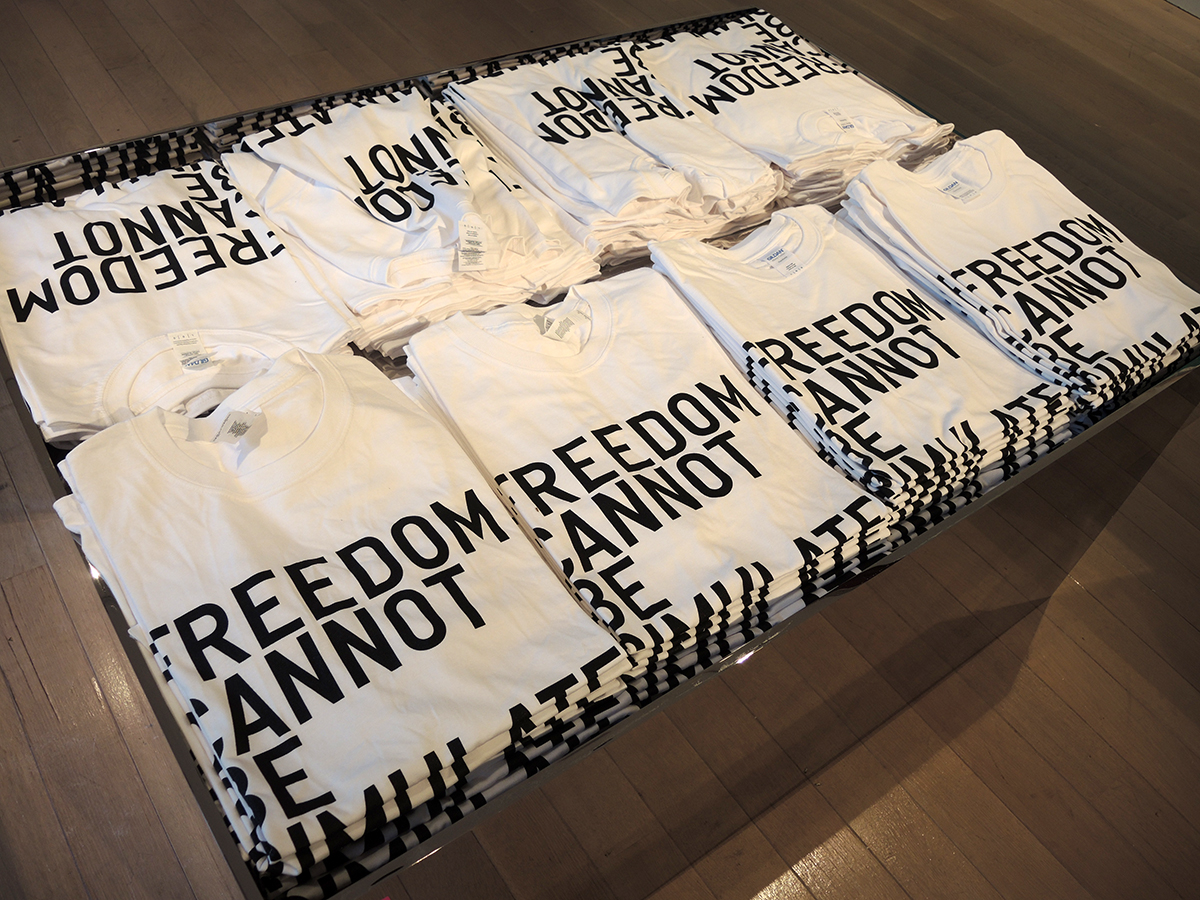
Rirkrit Tiravanija, Untitled 2016 (Form Follows Function or Vice Versa No. Two) (2016) in “Take Me (I’m Yours)” at the Jewish Museum. Courtesy of Sarah Cascone.
And while the works themselves, having been produced in such mass quantities, are worth very little (“obviously you’re not going to get a really big Jeff Koons,” Hoffmann admitted), that might not always be the case. As Boltanski told Hoffmann in a newly published conversation about the show, “in thirty years we might see something someone took away from the Jewish Museum’s exhibition emerge at a public auction.”
“Take Me (I’m Yours)” is on view at the Jewish Museum, 1109 5th Ave, September 16, 2016–February 5, 2017.